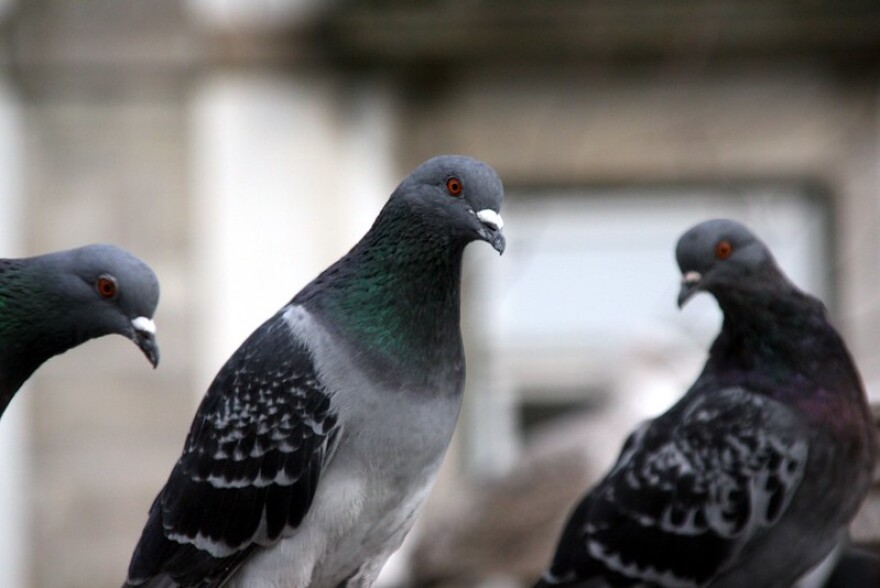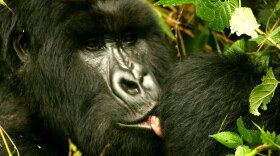On this show, the urban evolution of pigeons, the magic of kettle bogs, and what to do if you've been bitten by a tick.
Pigeon Megacities
By Justine Paradis
The northeastern United States is home to two “pigeon megacities,” according to research published in April. One city covers New York and the mid-Atlantic; the other, Providence to Boston.
In other words, New England pigeons don’t mix with the rest of the eastern seaboard.
Evidently, they’re prevented from dispersal by a swath of suburban green space in Connecticut.
“The pigeons have their own idea about what these cities look like,” said Joshua Sokol, a freelance writer who covered the research in the New York Times. “Obviously, we as people really do too. It’s just our ideas are a little bit different than the way that a pigeon sees it.”

This opens up a larger conversation about urban evolution, a field which explores how organisms are adapting to cities.
“Urban evolution is a relatively new field, for a long time we thought that evolution took millennia to happen and it was a very very slow process,” said Elizabeth Carlen, the scientist behind the research. She's an evolutionary biologist and PhD candidate at Fordham University. “About a decade ago, researchers started to realize that urban animals can actually change really quickly… a lot more quickly than we had ever thought.”
For the study, Carlen spent a lot of time searching for birds.
“I spent a lot of hours driving around cities, not seeing pigeons,” said Carlen. “We notice where pigeons are, but not where pigeons are not.”
Carlen caught pigeons using a net gun, took genetic samples, and crunched the data to determine if they were interbeeding across cities, matching up her findings with maps of impervious surfaces and light pollution maps.
“One of the biggest questions right now in our field is: how do we define urbanisation? Are there different metrics that we should be using?” said Carlen.
Read more about this story at The New York Times.

Science Teachers And Students Look To The Outdoors For Remote Learning
By Sarah Gibson and Annie Ropeik
A look at how students and teachers are working hard to do hands-on science in the time of remote learning. If you want some ideas for doing science at home, check out these resources:
- Squam Science Center, Seacoast Science Center, and UNH Sea Grant (where Gabby Bradt works) all have virtual ecology and biology lessons
- Motivis has free resources for K-12 science education
- Mystery Science offers free K-5 science curriculum
- Mount Washington Observatory has an online classroom.
- The New Hampshire Department of Education has resources for remote learning
10X10: Kettle Bogs - By Sam Evans-Brown

Few places hold more unexpected mysteries beneath the wet, mossy surfaces than the dark and muddy spots we explore in this segment. We call them by a multitude of names: mires, muskegs, moorlands, or bogs. But beneath the shrubs, sedges, rushes and moss of the bog we find something else - peat. It’s a journey that holds smokey hints of pepper, seaweed, and for peat’s sake, a lot of fossil fuels.
Ask Sam: Am I Crazy Or Am I Hearing More Woodpeckers? - By Sam Evans-Brown
Susanne from Rumney asks: "I’ve been going for a walk every morning since we’ve been quarantined. So, I’ve noticed lately that I’ve heard a lot of woodpeckers in the morning and I haven’t noticed them before. And I wondered if there are more of them or if this is the time of year that they are seeking wood from the trees?"
Tick Season: What To Do If You're Bit By A Tick - Taylor Quimby
This month, Taylor Quimby, host of the NHPR podcast Patient Zero, is bringing us straightforward advice on tick-borne diseases. Last week, we covered how to avoid being bitten by a tick. Today, what to do if you find one embedded in your skin.








